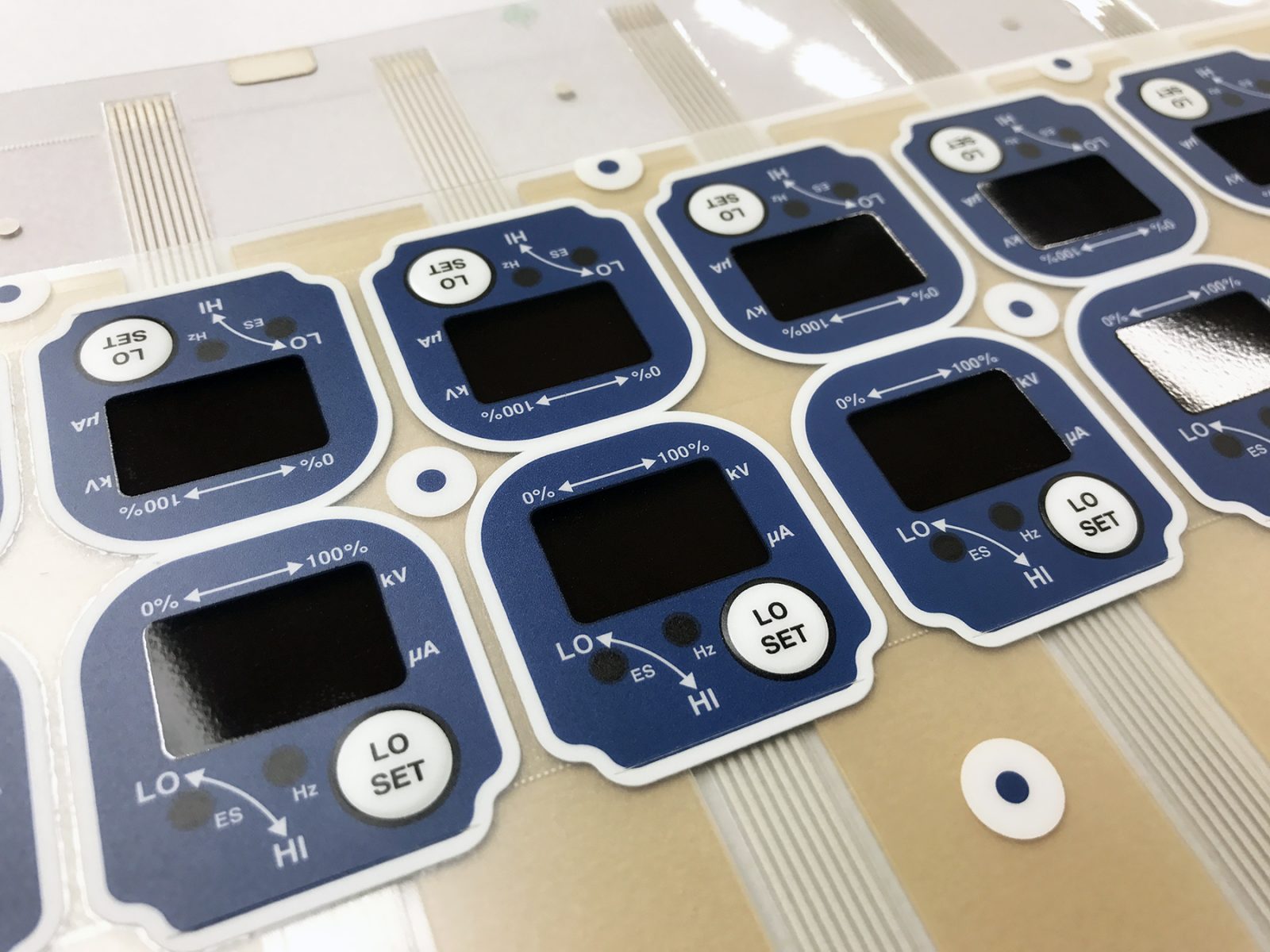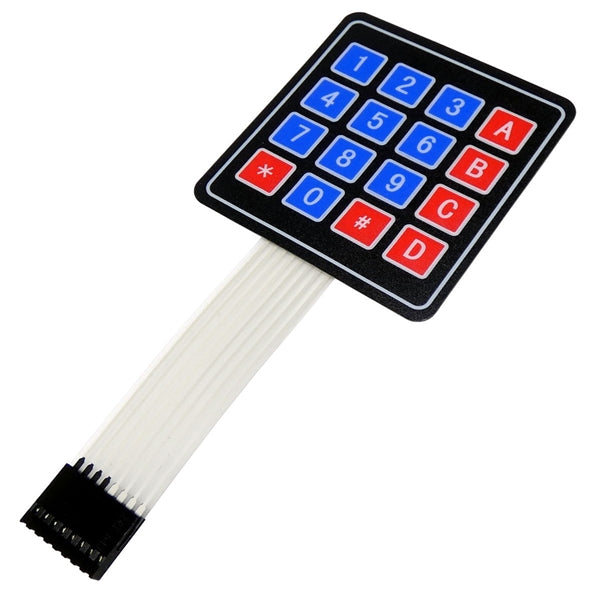Custom Membrane Switches for Specialized Applications: A Deep Dive
Custom Membrane Switches for Specialized Applications: A Deep Dive
Blog Article
Comprehending the Importance of Membrane Switches in Interface
Membrane buttons are indispensable components in the design of efficient individual interfaces, promoting not only functionality however likewise improving visual allure and customer communication. As we explore the various advantages and future patterns connected with Membrane innovation, it becomes clear that these switches are much more than just elements; they represent a convergence of advancement and functionality.
What Are Membrane Switches?

The spacer layer, which has glue residential properties, permits the separation of the circuit layer from the overlay, ensuring that the button stays in a non-activated state up until pressed. When stress is related to the overlay, it compresses the spacer layer, linking the space and completing the circuit in the underlying layer. This layout not only reduces the physical room required for traditional mechanical buttons however also boosts the sturdiness of the device, as Membrane switches are usually immune to dust, wetness, and other ecological elements.
Commonly discovered in applications ranging from customer electronics to clinical devices, Membrane switches are important to contemporary innovation, supplying a user-friendly and effective interface that lines up with modern style needs.
Advantages of Membrane Switches
While various button technologies exist, Membrane Switches offer unique benefits that make them particularly preferable in numerous applications. One of the main advantages of Membrane switches is their portable design, which enables space-saving executions in devices where genuine estate is restricted. Their slim profile not only boosts visual appeal however additionally facilitates lightweight building.
An additional significant advantage is their resistance to ecological variables. Membrane switches are usually secured versus dampness, dust, and contaminants, making them optimal for usage sought after environments, such as medical devices and industrial devices. This longevity extends the lifespan of the switch, decreasing maintenance expenses and improving dependability.
In addition, Membrane buttons can be tailored to fulfill details design requirements, including unique graphics and colors that boost user communication. Their tactile responses options can additionally be customized to give a satisfying customer experience. Additionally, Membrane buttons are cost-efficient, specifically in high-volume applications, as they can be generated effectively.
Applications in Numerous Industries

In the consumer electronic devices market, Membrane buttons prevail in tools such as microwaves, washing machines, and remotes. Their tactile responses and aesthetic alternatives improve customer experience while supplying a sleek, contemporary look. Furthermore, automotive suppliers utilize Membrane switches in dashboard controls and infomercial systems, where area is restricted, and user interaction is crucial.
In addition, the industrial market leverages Membrane switches in control panels for equipment and equipment, enabling instinctive operation in commonly harsh atmospheres. Their resistance to chemicals and dampness guarantees durability and integrity in these applications. In general, the flexibility of Membrane Switches contributes substantially to their widespread use, making them vital in numerous technological domains.
Style Factors To Consider for Membrane Switches

When developing Membrane switches, a number of crucial factors to consider have to be considered to ensure optimal performance and individual experience. First of all, the option of products is important; picking sturdy, high-quality substrates can enhance the button's long life and resistance to ecological variables such as dampness and temperature level variations.
Secondly, the design of the graphic overlay need to focus on clearness and simplicity of use. Symbols and message should be clear, and the layout needs to promote user-friendly interaction (membrane switches). Additionally, responsive feedback is crucial; including a tactile dome or other devices can improve the user experience by giving physical verification of activation
Another important aspect is the switch's electric efficiency. Designers have to make sure that the conductive traces are correctly made to lessen resistance and avoid signal disturbance. This involves analyzing the needed actuation pressure and making wikipedia reference sure compatibility with the electronic parts they will user interface with.

Future Fads in Membrane Innovation
As technology remains to breakthrough, Membrane buttons are positioned to develop dramatically, driven by developments in products and making methods. One arising fad is the incorporation of sophisticated products, such as conductive inks and flexible Full Report substratums, which improve longevity and reduce the general weight of Membrane buttons. These materials not only enhance the responsive feedback but likewise enable the layout of buttons that can withstand harsher environmental conditions.
Moreover, the assimilation of touch-sensitive technologies is transforming conventional Membrane Switches right into even more interactive interface. Capacitive touch sensing units installed within Membrane button panels can provide a more responsive and user-friendly individual experience, straightening with the expanding need for streamlined, modern-day layouts in customer electronic devices.
In addition, advancements in printing techniques, such as digital and 3D printing, enable quick prototyping and customization of Membrane buttons. This adaptability permits suppliers to react faster to market needs and consumer preferences.
Lastly, sustainability is becoming a significant emphasis, with suppliers discovering green products and processes. As these trends unfold, the future of Membrane innovation guarantees improved functionality, aesthetic allure, and ecological obligation, solidifying their duty in innovative interface across various sectors.
Final Thought
In conclusion, Membrane Switches represent a crucial part in the design of customer interfaces, combining performance with visual flexibility. As improvements in technology continue, the advancement of Membrane switches is anticipated to more refine individual interfaces, driving technology and improving functionality in a significantly complex technological landscape.
Membrane buttons are integral components in the style of reliable customer interfaces, helping with not only capability yet also enhancing aesthetic charm and customer more information communication.Membrane Switches serve as an important element in different customer interfaces, promoting a seamless interaction between users and electronic gadgets.While many button modern technologies exist, Membrane Switches deal distinctive benefits that make them specifically preferable in numerous applications.Moreover, Membrane buttons can be customized to meet specific design requirements, incorporating unique graphics and colors that enhance user communication.In verdict, Membrane Switches stand for a crucial element in the style of customer interfaces, combining capability with aesthetic adaptability.
Report this page